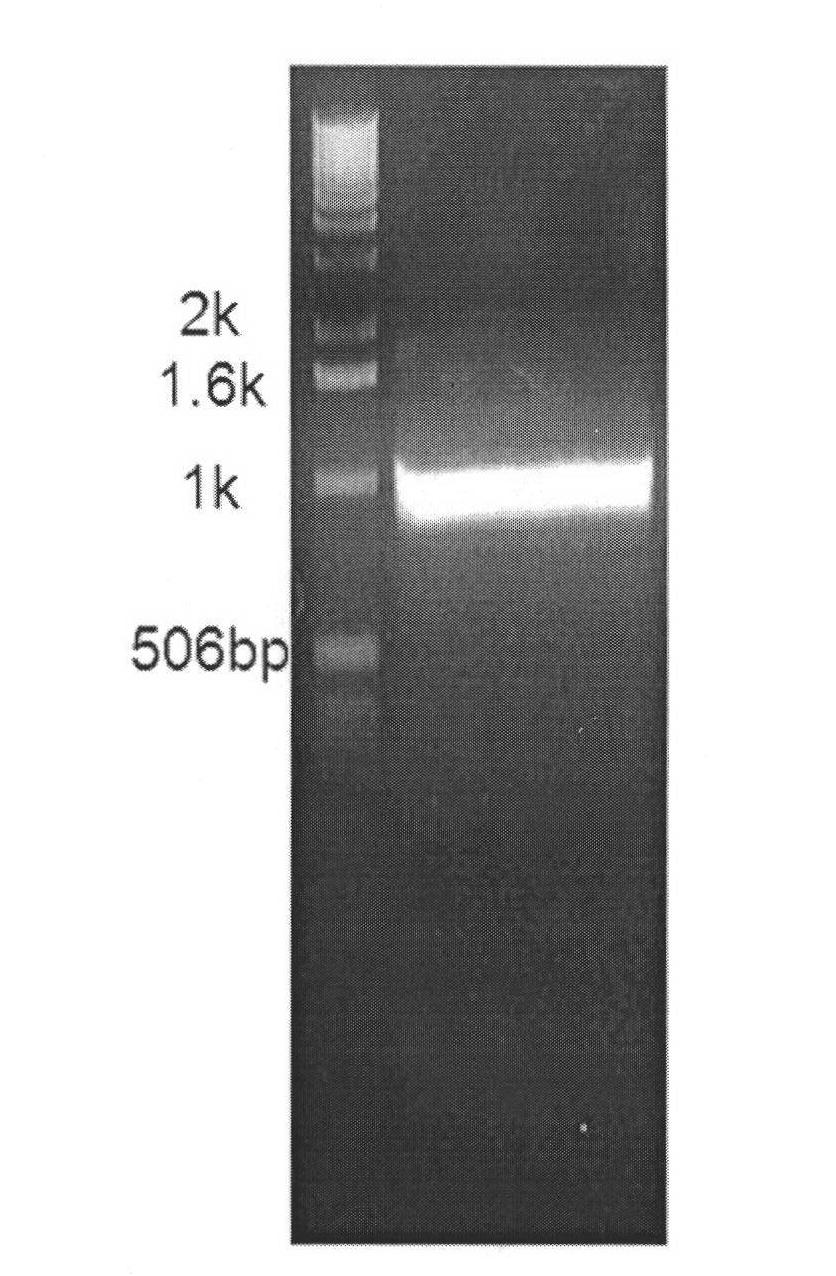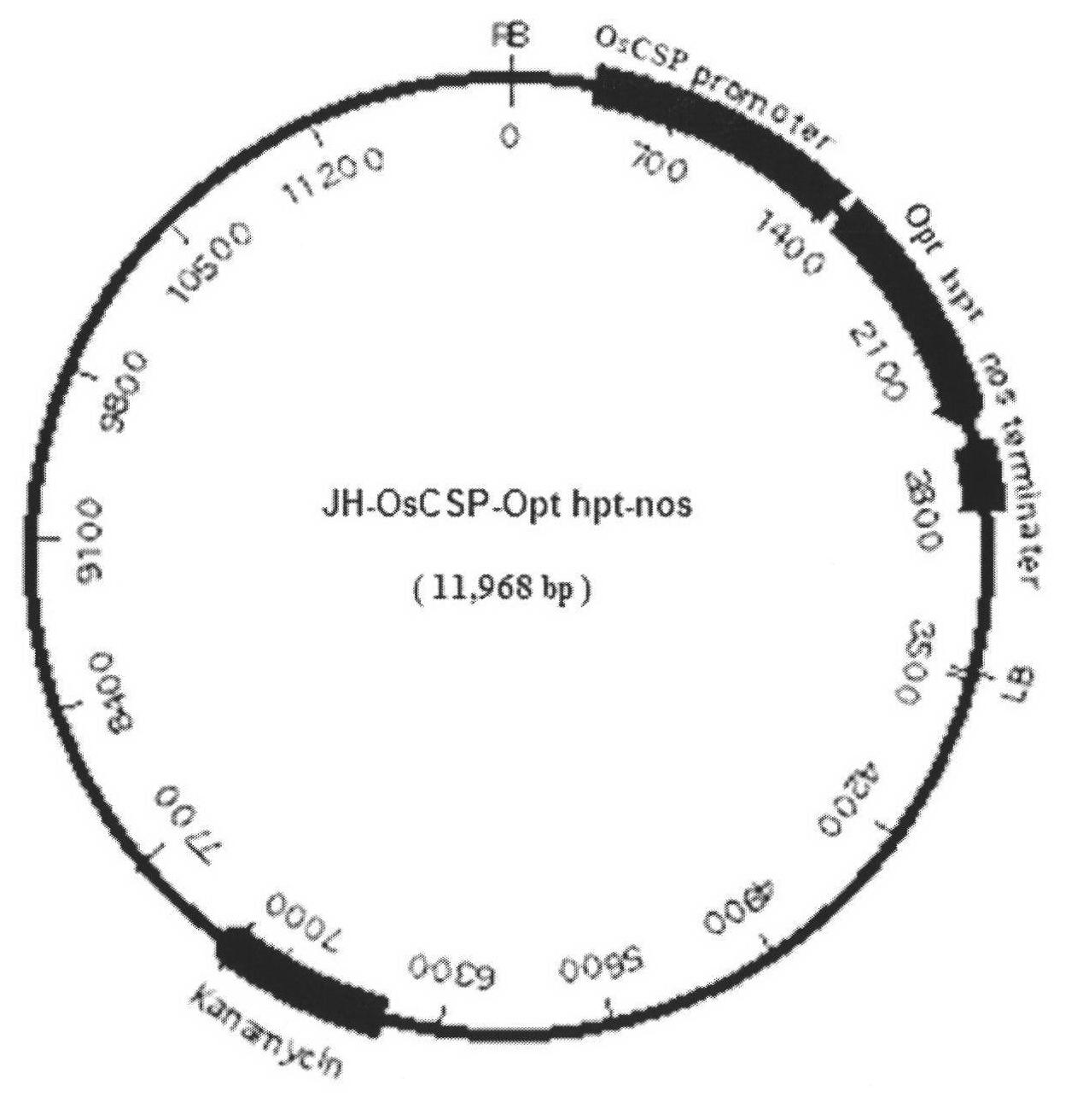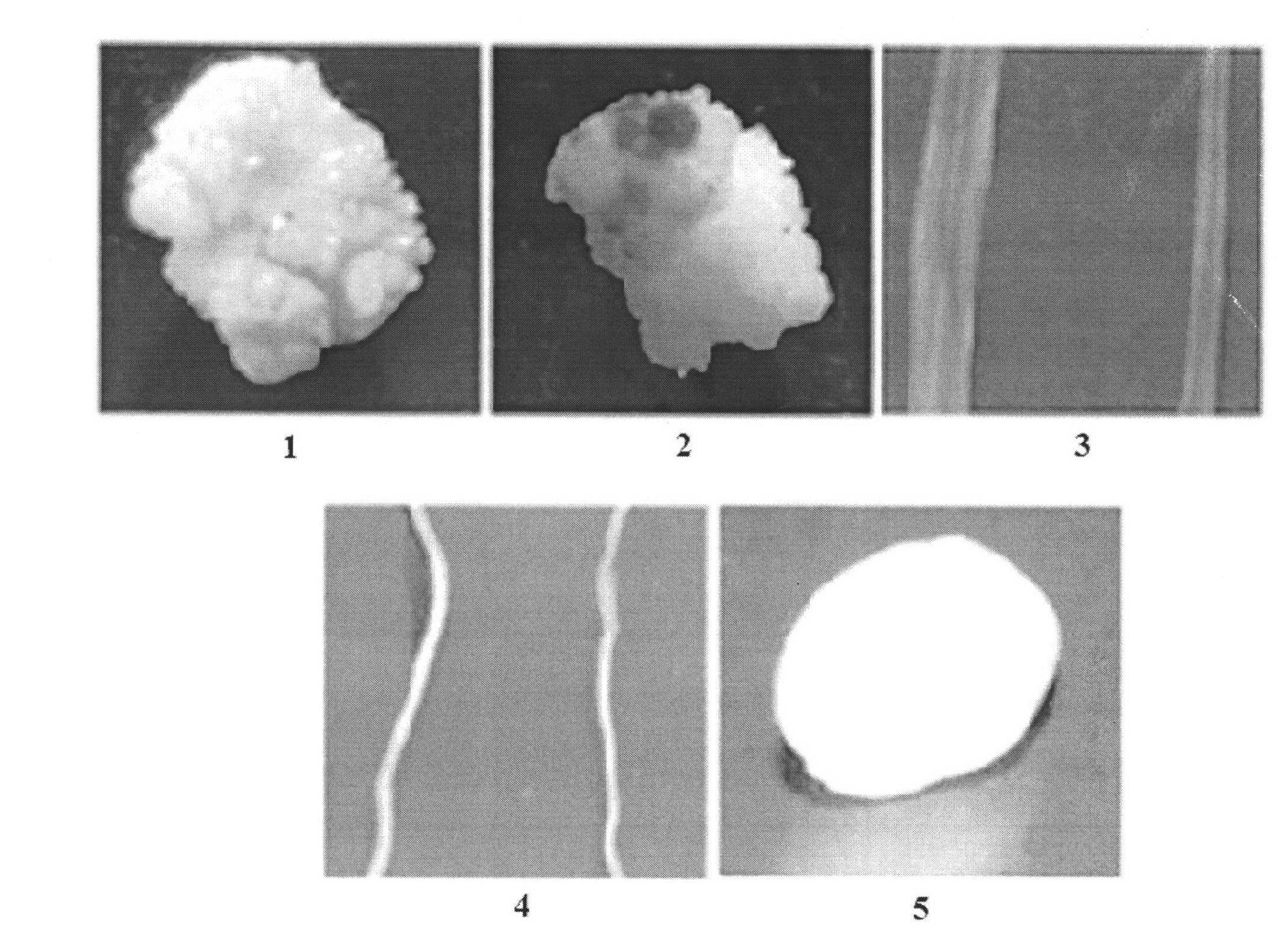Rice callus-specific promoter and application thereof
A callus and promoter technology, applied in the field of plant genetic engineering, to improve screening efficiency, reduce safety concerns, and improve expression
- Summary
- Abstract
- Description
- Claims
- Application Information
AI Technical Summary
Problems solved by technology
Method used
Image
Examples
Embodiment 1
[0025] [Example 1] Cloning of Rice Callus Specific Promoter (OsCSP)
[0026] 1. Extraction of rice TP309 genomic DNA
[0027] A) Take 0.1 gram of young leaves and place them in a mortar, add 0.6ml of CTAB extract, and grind the leaves evenly;
[0028] B) Warm bath in a water bath at 65°C for 30 minutes, during which gently shake 2-3 times, take out after warm bath and cool to room temperature naturally;
[0029] C) After adding 0.6ml of extract solution (chloroform: isoamyl alcohol = 24:1), shake gently for 5 minutes, and centrifuge (10000rpm) for 5 minutes;
[0030] D) Draw the supernatant into another 1.5ml centrifuge tube, add 75 μL of 3M sodium acetate and 1ml of pre-cooled absolute ethanol;
[0031] E) Centrifuge (12000rpm) at room temperature for 10 minutes, discard the supernatant, add 1ml of 70% ethanol, centrifuge to wash the precipitate, pour off the ethanol, and dry the DNA;
[0032] F) After the DNA is fully dried, add 200 μl of sterile ddH2O to dissolve the DNA, ...
Embodiment 2
[0042] [Example 2] Construction of a vector containing the OsCSP promoter
[0043] 1. Construction of OsCSP-stuff-nos vector
[0044] The amplified fragment of the OsCSP promoter was double-digested with HindIII / NaeI to recover the product and the pBI221 plasmid. The promoter after enzyme digestion was recovered by precipitation, inserted into the 4.8kb pBI221 vector recovered after enzyme digestion, and the correct transformant was screened after transformation of DH10B. The obtained vector OsCSP-stuff-nos number is pOsPMP209.
[0045] 2. Construction of OsCSP-gus-nos vector
[0046] Using pCAMBIA1301 as a template, the GUS gene was amplified. The forward primer is 5'-cggtgccggcATGGTAGATCTGAGGG-3' (SEQ ID NO.6), the reverse primer is 5'-ccgctcgagTCACACGTGGT GGTG-3' (SEQ ID NO.7), and the amplification temperature is 60°C. The product was recovered by digesting the PCR gel with NaeI / XhoI, and the digested product was precipitated and recovered, inserted into the pOsPMP209 ...
Embodiment 3
[0053] [Example 3] Agrobacterium-mediated transformation
[0054] 1. Culture of callus
[0055] Take mature rice seeds, soak them with 20% sodium hypochlorite (adding 1-2 drops of Tween 20) for 30-40 minutes on the ultra-clean bench after shelling, and rinse them with sterile water for 4-5 times. Blot the water with sterile filter paper, put it on the callus induction medium, and culture it in the dark at 26°C for 4 weeks, pick the bright yellow, dense, relatively dry callus and transfer it to the subculture medium, and culture it in the dark at 26°C for 2 weeks. week.
[0056] 2. Agrobacterium transformation
[0057] The Agrobacterium strains of pCAMBIA1300(35S-hpt-nos), pOsPMP122(JH-OsCSP-hpt-nos), pOsPMP522(JH-OsCSP-opt hpt-nos) and pOsPMP43(OsCSP-gus-nos) plasmids were respectively streaked The bacteria were inoculated on YEB solid medium containing 50mg / L kanamycin, and cultured in the dark at 28°C for 2 days. Transfer the Agrobacterium to the suspension medium respec...
PUM
 Login to View More
Login to View More Abstract
Description
Claims
Application Information
 Login to View More
Login to View More - R&D
- Intellectual Property
- Life Sciences
- Materials
- Tech Scout
- Unparalleled Data Quality
- Higher Quality Content
- 60% Fewer Hallucinations
Browse by: Latest US Patents, China's latest patents, Technical Efficacy Thesaurus, Application Domain, Technology Topic, Popular Technical Reports.
© 2025 PatSnap. All rights reserved.Legal|Privacy policy|Modern Slavery Act Transparency Statement|Sitemap|About US| Contact US: help@patsnap.com



